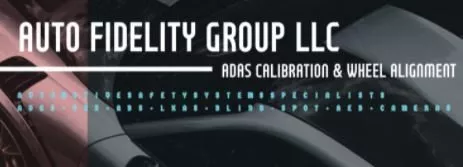Horseshoes and Hand Grenades
Sometimes, with some things, accuracy isn’t all that important. Like in a game of horseshoes or tossing a hand grenade. But the same can’t be said for diagnosing today’s cars. Close isn’t good enough. Today’s professional mechanic doesn’t just grab a component hanging from a branch of the proverbial parts tree and see if that will fix the problem. It requires a diligent effort of testing and diagnostic time to analyze the maze of electronic data. That’s not to say a consumer won’t stumble across a repair shop that still uses the hand grenade method to diagnosing their car. Believe me, there still out there.
Basically, there are two types of mechanics a consumer will run into. One that will test and retest before condemning a component and the other that will swap parts until they’ve solved the problem or give up and send the customer to the other type of mechanic.
To avoid the proverbial slinging of the horseshoe a good shop will listening to the customer’s complaint, following the diagnostic procedures and base their findings on the test results. It’s a far better way of solving a problem than firing the old parts cannon at a job. Testing for a failure or scanning for failed data (or scope) is the preferred method by any good mechanic.
Take a look at any training video out there. They’ll show you how a component or system functions and then get into how to test it for failures. They might use a scanner, perhaps a scope, or even a basic multimeter. But, in all situations the concept is to show the technician the various ways of testing. Seriously, have you ever watched a training video that told you to fire up the parts cannon and take a wild shot at it rather than testing for the failure? I haven’t.
So why are parts swapping repair shops still a big part of the automotive repair business? In my opinion, it’s the lack of training, no time for advance classes, or they believe they can get by without learning something new. Most of these shops are after how fast they can get a customer’s out the door. They’ll spend as little time as possible diagnosing while spending the majority of their time taking stabs at installing different parts that might be the problem. Eventually, they’ll hit the target.
Instead of taking the time to hire qualified technicians these shops have a tendency to hire anybody that has a toolbox, walks upright, and can fog a mirror. Training isn’t cheap, and a trained technician isn’t either. Proper testing takes time, which invariably costs money.
Their methods of repair are quick, cheap, and occasionally spot on. But not always. Then, to top it all off, most of these places will use the second rate components from the local discount auto parts store and not a mechanics grade or OEM level component. The average consumer doesn’t know which part or brand is better than the other. They’re relying on the mechanic and the shop to sort that out for them, and at these shops you can bet the quality of the part is going to be in question. They just want it as cheap as possible and as quick as possible. But, when the old switch-a-roo cheap parts merry go round doesn’t do the trick they’ll send the customer onto one of those other guys. You know, the ones that will test things first.
Of course, by the time the customer has reached a shop that will correctly test the problem they’re already out of cash and have little to no confidence that anyone can fix their car. Now the problem isn’t so much about the cost of the parts or components, but the time (and cost) it will take to correctly diagnose it.
I’ve got to hand it to these stab in the dark parts shops, and those parts stores that offer free code checks. They’ve got the market cornered on convincing the consumer that all it takes to fix today’s cars is a quick glance at some off shore generic code reader and a couple of cheap components from parts unknown. Never mind that there are pages and pages of diagnostic procedures that go along with those service codes.
Of course, when the customer who has already lost their patience and has finally made it to a shop that will actually diagnose their problem you’ll hear, “I’ve already had it tested so I don’t need to pay you to test it again.” Now that’s funny, getting it tested and diagnosed correctly is exactly why they are there in the first place. Go figure.
A good example of this was a rather heated customer whose car had a miss after a tune up at another shop. (One of those parts swapper’s shops) The other shop had already tossed the parts grenade at it and had given up. They tried sensors, computer, the tune up, and just about every other part they could think of. The tech at the new shop looked it over with his scanner and to back up the scanner results he pulled out his scope and checked it in a completely different way than what the scanner was capable of.
Looking at the secondary ignition trace this trained technician could clearly see a problem with the spark plug. The entire problem turned out to be a brand new spark plug that had a slight crack in the porcelain.
Now how long did it take to make the actual repair? You know, replacing one easy to reach spark plug that the original shop had already replaced? Not long at all. But, how long did it take to set up the scope and do the testing and verify the results? Probably twice as long as it took to change the plug. Just goes to prove that diagnosing is a bigger part of the repair procedure than ever before and shouldn’t be overlooked just to cheapen the job.
Parts swapping without testing or simply going off a code as a solution to today’s car problems is like playing with horseshoes or hand grenades. You’re going to get it right some of the time but that’s just sheer luck. You have to ask yourself, “Is close enough good enough when you’re diagnosing and repairing today’s cars for a paying customer?” I think not.














Recommended Comments
Create an account or sign in to comment
You need to be a member in order to leave a comment
Create an account
Sign up for a new account in our community. It's easy!
Register a new accountSign in
Already have an account? Sign in here.
Sign In Now